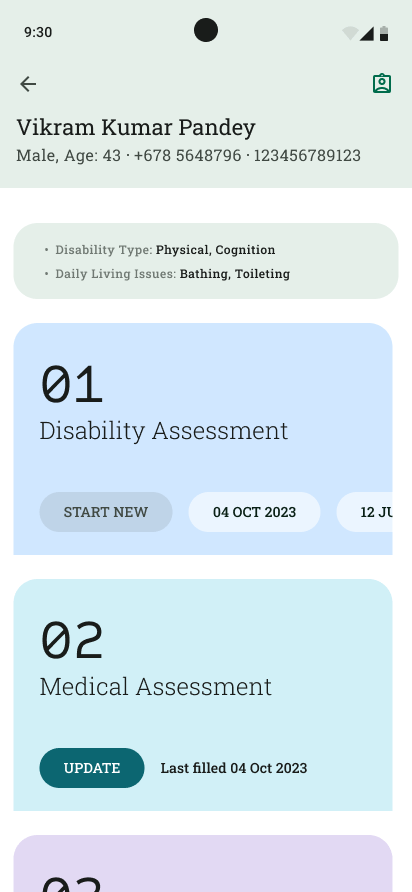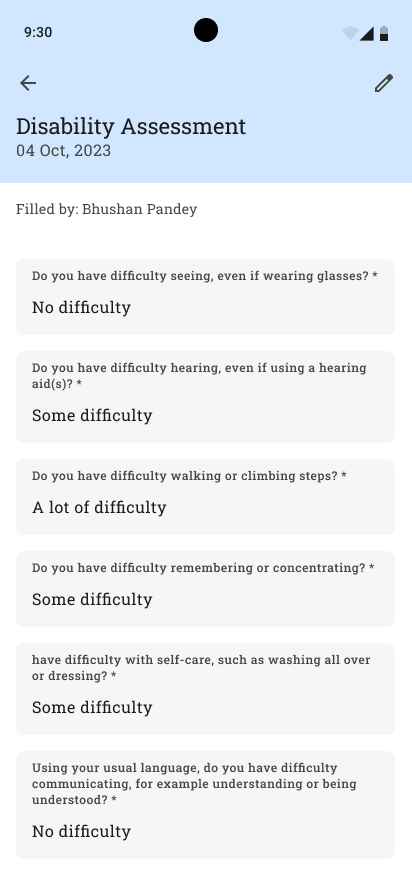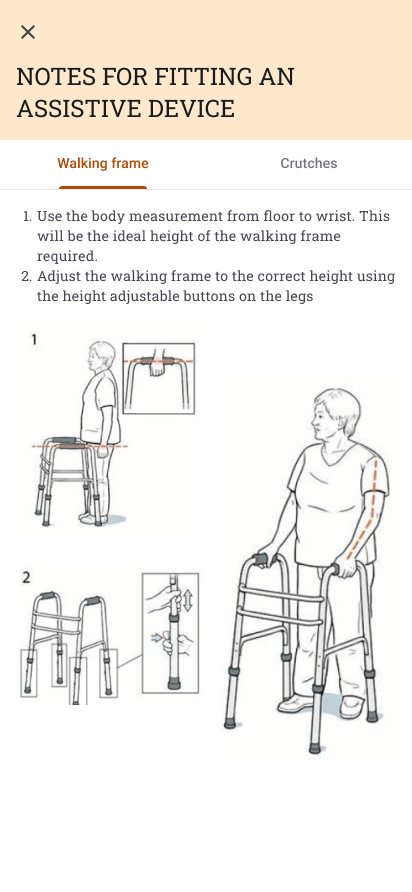MDR: Medical Disability Registry
The Medical Disability Registry (MDR) is a national digital platform developed for the Vanuatu Ministry of Health. to track and manage disability-related data across the country.

Screenshots
The Android app is at the heart of the system. It uses the Washington Group Short Survey (WG-SS) to assess diasbility, and provide guidance on how to fit




Overview
Funded by the Pacific Community (SPC) and World Vision, the MDR was designed and implemented to enable the government to capture accurate, real-time information on persons with disabilities, facilitate referrals and service delivery, and support evidence-based policy-making. The system adheres to international interoperability standards and is built using FHIR (Fast Healthcare Interoperability Resources) data models.
Problem Statement
Before the introduction of the MDR, disability-related data in Vanuatu was fragmented, outdated, and often paper-based. There was no centralized system for tracking individuals with disabilities or for coordinating services across government and partner organizations.
This led to:
Inconsistent reporting across provinces and health facilities
Limited visibility into the needs and distribution of persons with disabilities
Inefficient referral systems for support services (e.g., rehabilitation, education, assistive devices)
Weak policy planning due to data gaps
Challenges in meeting regional and global disability reporting obligations
The Ministry of Health needed a robust, scalable digital platform to unify and modernize disability data management.
Solution
To address these challenges, a comprehensive FHIR-based Medical Disability Registry was conceptualized and developed. This digital system enables the Ministry of Health and allied stakeholders to:
Utilize a standardized measure of disability assessment — the Washington Group Short Set on Functioning (WG-SS) — in line with regional reporting requirements
Use a customized workflow for disability assessment that digitizes current work practices
Conform to a global health informatics data model (FHIR), designed for interoperability
Enable real-time and offline-first data entry from community health workers and field staff
Track longitudinal health and social service delivery for persons with disabilities
Generate reports and dashboards for planning, referrals, and policy decisions
Ensure data privacy and role-based access aligned with public health information standards
The MDR integrates with broader national health systems, laying the foundation for long-term health information system strengthening.
How it works
The Medical Disability Registry is designed with ease of use, flexibility, and inclusivity at its core. It provides the following features:
Data collection
Field workers, community-based rehabilitation officers, and health facility staff use web and mobile interfaces to register individuals with disabilities. The application supports offline data entry and syncs automatically when internet connectivity is available.
FHIR-compliant architecture
All records are stored using FHIR resources, such as patient, condition, observation, and encounter, to enable interoperability with other health systems.
Unique identifier for longitudinal tracking
Each individual is assigned a unique identifier, to track their medical history, rehabilitation services, and social support over time.
Referral and service coordination
The system enables intra- and inter-agency referrals (e.g., between health, education, and social services), helping ensure individuals receive timely, coordinated care.
Data visualization & reporting
Interactive dashboards and exportable reports are built into the platform, enabling ministry officials, donor partners, and program managers to view aggregated insights and monitor implementation progress.
Secure & role-based access
Users have access based on their roles—ensuring that data entry personnel, supervisors, and administrators each have appropriate permissions and data visibility.
Localization & ease-of-use
The system is adapted for the Vanuatu context, including language support, customized assessment workflows, and visual design informed by user research.